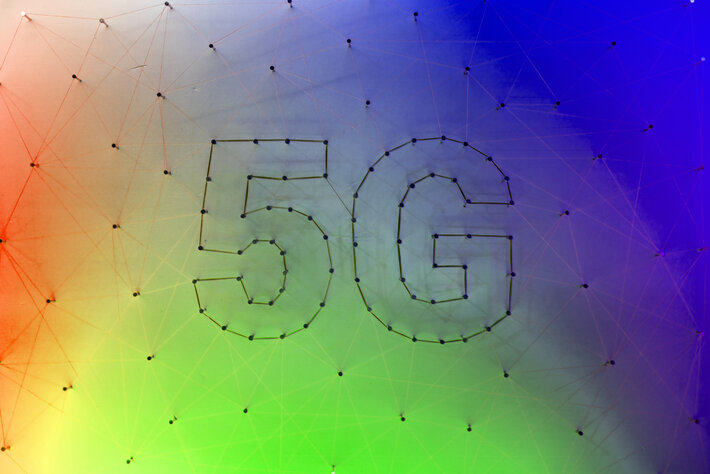“Each facet of the customer lifecycle will need to be considered from order to cash.”
Over the last decade the telecommunications landscape has rapidly evolved. The line between telecoms and the internet is becoming increasing blurred, says Dr Ralf Guckert. ‘Being online’ has become a normal part of people’s day-to-day life and the means of getting online, whether via a home PC, wireless enabled laptop or mobile smartphone are becoming increasingly irrelevant.
Ericsson estimates that by 2020, 50 billion devices will benefit from a network connection. These will range from today’s handheld devices to energy meters, vending machines, household appliances and motor vehicles. This trend towards ubiquitous connectivity means that communication service providers (CSPs) will face unprecedented business change that they must adapt to in order to thrive. This will require a streamlined and holistic approach to designing OSS/BSS architectures that, for a great number of CSPs, will involve a transformation of their current environments.
This article examines the interdependent guiding business principles that will drive changes in the key operational and business processes and systems, as well as the architectural principles behind the required OSS/BSS transformation.
Customer experience
In the next decade CSPs must adhere to the principle that services should be driven by the experience and benefits demanded by the customer. The end-customer expects to be able to receive all services wherever and whenever they choose and will no longer accept technology as a limiting factor.
Customers are also likely to subscribe to many more services than they have in the past, perhaps seeking an entire communications, entertainment and even utilities package from a single provider. These will include services developed and delivered by third parties. These services need to be available on multiple devices and need to be seamlessly interchangeable.
To succeed in a converged world, CSPs will require OSS/BSS environments capable of delivering an enhanced personalised customer experience. To do so will require them to have a single view of the customer, which is more than a single customer care point and an integrated bill. It is about providing a seamless experience from the moment a service is ordered through to the payment and even dunning processes.
For example, OSS/BSS environments will need to be able to orchestrate the ordering and provisioning of all the service components of the subscribed package, which may involve communicating with external third party systems. This will all need to happen within prescribed SLAs (with both customers and partners) and will need to be fully automated; after all, a customer subscribing to a mobile multimedia package would not be content to have instant access to voice services but have to wait a week before his mobile video on demand services were available.
CSPs will also need to take into consideration various user criteria such as spending controls, parental controls, location and advertising preferences which will allow them to more proactively engage with their customer. Delivering on these preferences will require end-to-end, real-time OSS/BSS capabilities including customer management, charging and policy management and billing for all services.
Embracing new business models
It is clear that by 2020 customers will consume vastly more data than they do today. This means that CSPs will need to switch from models of selling voice minutes and flat rate data plans. Instead they will need to adopt business models that focus on specific types of end customer value, depending on their preferences. This could include charging for access to premium content, different levels of service quality or download speed or even advertising-free services.
In order to compete against new players from internet and device manufacturer domains, CSPs will therefore seek to augment their service portfolios with services, applications and content from third parties.
The principle of embracing new business models does not apply exclusively to consumer facing services. Over the next decade, CSPs will need to increasingly examine their strengths in terms of value disciplines and formulate strategies accordingly. For example, CSPs targeting the enterprise market may become providers of enriched business communications and/or SaaS applications developed by a range of third parties. Carriers may also decide to monetise their assets and focus on the wholesale market with third parties delivering content and cloud services to their customers.
For the next generation CSP, partner management within OSS/ BSS will be fundamental. However, this will extend beyond charging and bill settlement/reconciliation for revenue share models. It will require extensive service level agreement management with multiple partners that govern availability of services, quality of service, download speed, and warranties relating to intellectual property rights. The ability to support advanced advertising based models will also be crucial, including click through billing models, real-time charging and policy management, and advertising-funded content.
In addition, the ability for customers to be able to assemble their own bundles of services from predefined ‘building blocks’ of minutes, texts and downloads will become increasingly important. This is not a capability that most CSPs have today, but will be an important business imperative and potential competitive differentiator for the future.
The financial imperatives
CSPs are conscious of the costs that will be incurred to support new services, partners and devices. Historically, they introduced new processes and sets of support systems for each new service they offered, or they relied on disjointed, manual processes to manage third parties and support new technologies. If CSPs are to meet the future business challenges effectively, they must overhaul the way they operate, significantly reducing the cost elements associated with carrying out complex business processes.
From an OSS/BSS perspective the solution to the complexity brought by this business change is based around simplicity. CSPs will need to take a holistic approach to designing OSS/BSS architectures.
As an industry we have been talking about convergent charging and billing for years; this same principle of convergence will need to be applied to the entire OSS/BSS environment, with common, and where possible, automated processes and systems. Each facet of the customer lifecycle will need to be considered from order to cash.
Strategic models
So, how does a CSP go about assessing its OSS/BSS architectural requirements? First off, CSPs need to make an honest appraisal of where they stand in their market. Ericsson believes that distinct categories of CSPs will evolve based on their core competencies and strengths. At one end this will include a CSP acting as a ‘smart pipe’ – providing highly costeffective access and transport services on a wholesale basis with minimal direct contact to the end-customer. From an OSS/BSS perspective, they require support for charging their end-customer facing brand partners based on parameters including QoS, speed, security, and latency.
The other extreme will have the CSP covering multiple roles, where large vertically integrated players provide the end-customer with everything from connectivity to lifestyle business services, developed both in-house or sourced from partners. This model will require highly scalable, multi-tenancy, multi-country, and multibranding enabled OSS/BSS. The CSP will require a deep understanding of all customer needs to secure the potential delivery of services and content to hundreds millions of subscribers.
The reality for most CSPs will be somewhere in between, but it is essential that together with the guiding business principles listed above, they understand these strengths in order to build sustainable strategies and the OSS/BSS environments required to execute them.
 The author is Dr. Ralf Guckert, VP Product Strategy. LHS – Part of the Ericsson Group
The author is Dr. Ralf Guckert, VP Product Strategy. LHS – Part of the Ericsson Group
50 billion connections and counting: New OSS/BSS Requirements in 2020






